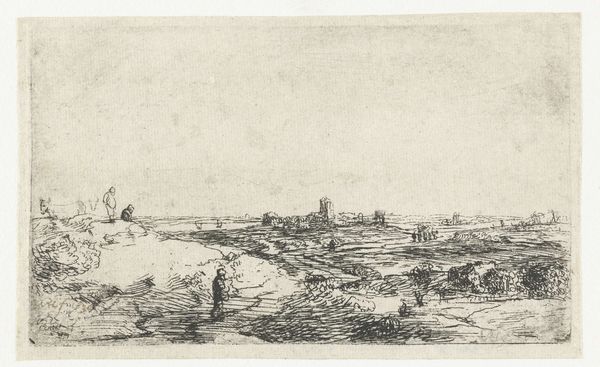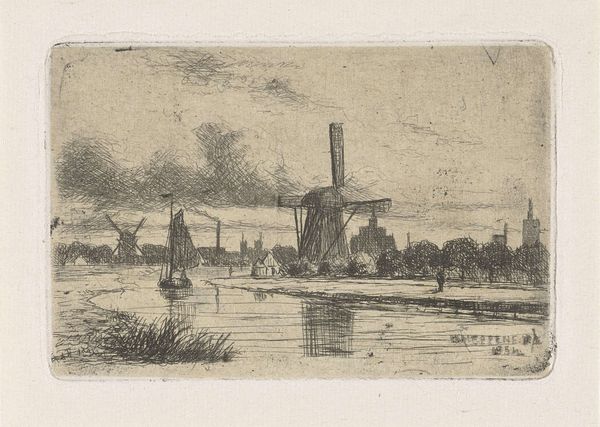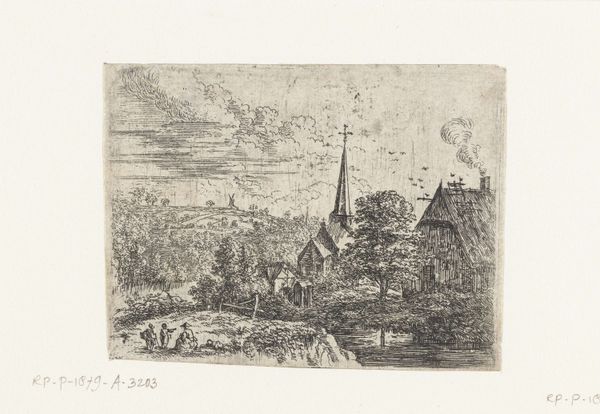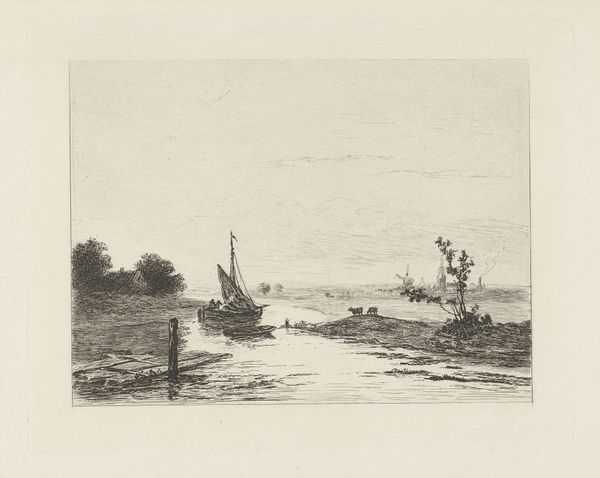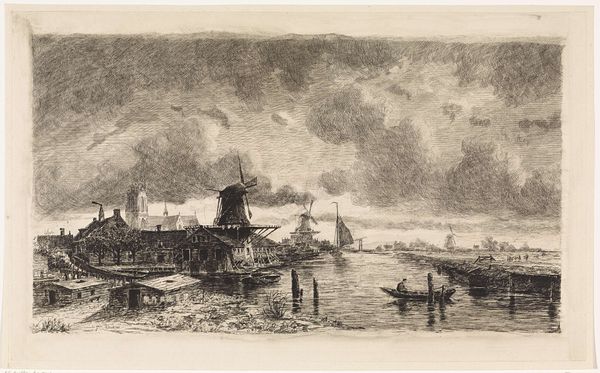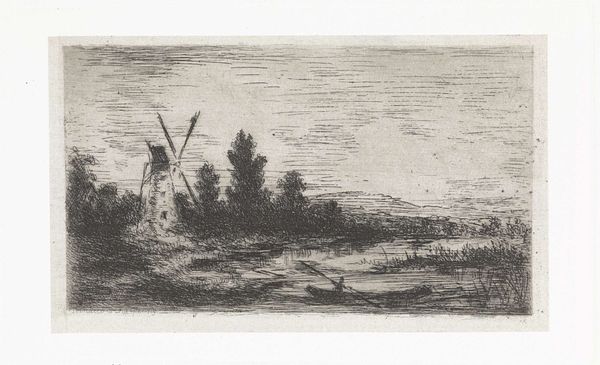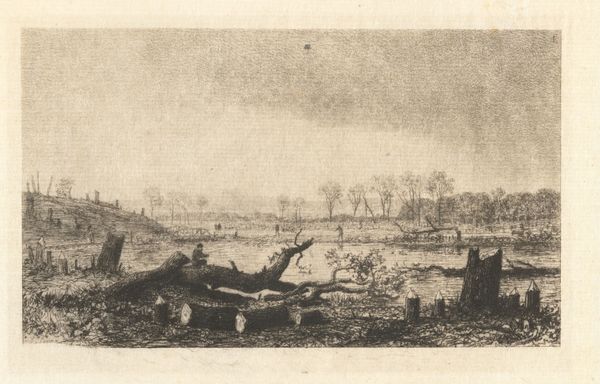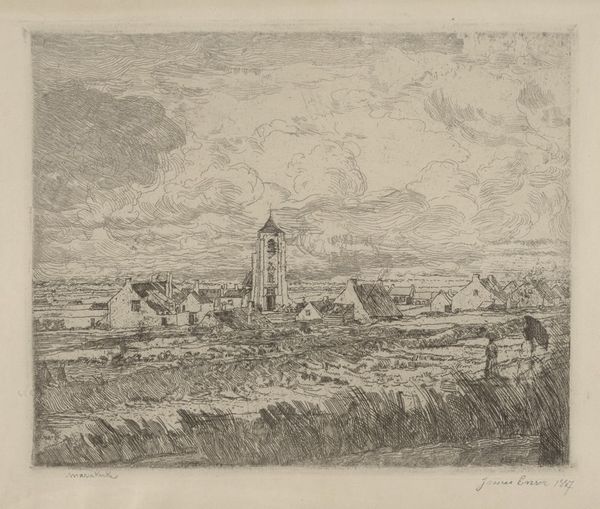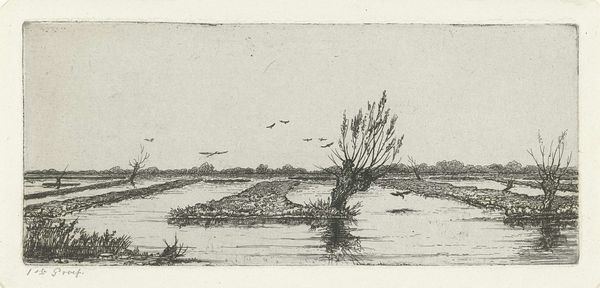
print, etching
#
dutch-golden-age
# print
#
etching
#
landscape
#
realism
Dimensions: height 119 mm, width 178 mm
Copyright: Rijks Museum: Open Domain
Jan van Lokhorst created this landscape with a mill using etching, a printmaking technique, sometime between his birth in 1837 and death in 1894. During this period, the Netherlands was undergoing significant social and economic change, with industrialization beginning to transform the traditional agrarian landscape. Lokhorst’s choice to depict a rural scene with a windmill is interesting because it evokes a sense of nostalgia for a pre-industrial past. The windmill, a symbol of Dutch identity and ingenuity, stands as a proud monument amidst the changing times. The figures walking along the path seem to be taking in the tranquility of the scenery, perhaps finding solace in the simplicity of the natural world. But while seemingly bucolic, the image also hints at the socio-economic realities of the time. The labor involved in maintaining the landscape, the reliance on natural resources, and the contrast between rural and urban life are all subtly present. Through this lens, the artwork becomes a reflection on the complexities of progress, tradition, and the human relationship with the land.
Comments
No comments
Be the first to comment and join the conversation on the ultimate creative platform.
